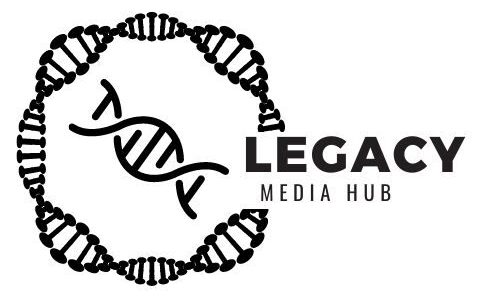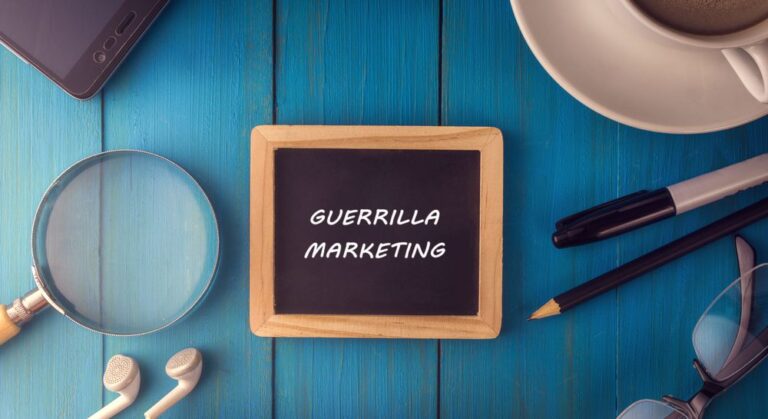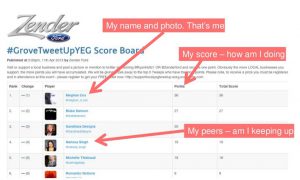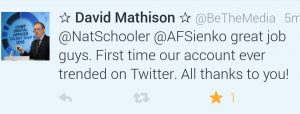Whether you are an established business or a start-up, there are many ways to utilise guerrilla event marketing strategies to build your email database and engage with your customers.
In this article you will discover two simple strategies I have used to successfully grow brand awareness, generate leads and grow sales. Both these strategies can be used for B2B or B2C, both can be very powerful for increasing visitors to your website and building stronger relationships.
Creating engaging and memorable experiences is a great way to connect with your customers and build excitement around your brand or product. Guerrilla event marketing allows you to do just that, by taking a non-traditional approach to traditional marketing tactics.
If you are a small business and want to move forward with these strategies it is good to have your own domain name and email address to collect emails.
There are many different strategies and techniques you can use in your guerrilla event marketing efforts, including using social media, hosting live demonstrations, and sponsoring community events. For example, you might choose to create a strong online presence on social media platforms like Facebook and Twitter, or actively engage with potential customers in person at industry events or local meetups. Another great strategy is to host one-of-a-kind live events that allow people to interact with your products or services directly. Whatever strategies you choose, remember that the goal of guerrilla event marketing is to capture the attention of potential customers and leave them feeling excited about what your brand has to offer.
With the right combination of creativity and strategic planning, you can use guerrilla event marketing techniques to build stronger relationships with existing customers and attract new ones as well. So why wait? Start putting these powerful strategies into action today!
Pre-Event Planning Considerations
Like any sales and marketing strategy it is important to plan out what success will look like for your business. Eg. how many qualified leads, meetings or sales will make it a success?
Your cross-channel event marketing strategy needs to include technology selection, channel selection, content creation and careful integration of offline marketing activities with your online; making sure at every step your event strategies support your existing sales & marketing plan.
“So often we see a (sometimes quite good) graphic, perhaps originally designed as a magazine ad, which is then used as an email, which is then tweeted, posted and this seems just like a terribly wasted opportunity.” Quote – Adam Gray, Co-Founder, Digital Leadership Associates
Tracking website visitors across multiple channels enables you to maximise your return on investment and to have a full view of ALL touchpoints, enabling you to personalise your content enough to be relevant. To succeed in a cross channel campaign you need to take the time to create different content for each channel you are going to use. Remember you do NOT need to be on every channel just because your competitors are.
Building relationships on social media with the right businesses and people prior to the event is important, sending out mail, emails and telephoning your existing customers to let them know you are attending and that you would like to see them is important.
Knowing which #hashtags are being used for the event and who are the most influential people there are also important. The event organisers usually have the most influential accounts, if approached prior to the event they will generally assist you with your social campaign by amplifying your reach.
Schedule tweets and other social media posts to go out alongside the more real-time posts if you have the resources to post and support them from your HQ; ideally generating qualified appointments or visitors to your stand. NB: If you are going to do a Facebook live broadcast make sure you are speaking at the event or have something truly remarkable to say! (A good quality phone with a good microphone will also help).
After Event Follow Up Plan
Of course all businesses have different event follow up procedures, email drip campaigns, social nurturing, ad re-targeting etc. but as far as business to business networking the following information is very useful. After speaking with Andy Lopata:- International Speaker and Author on Networking Strategies
“The most effective approach to follow up I have found was mentioned by a delegate in one of my workshops about ten years ago.
It is ’24-7-30′. Follow up within 24 hours, remember this is not dating and you will seem to be reliable, rather than desperate! Your conversation will also be fresh in their memory.
Follow up again after seven days. Ideally this should be a different approach, maybe a personalised LinkedIn connection request.
A third follow up 30 days after you met should secure you a position in their memory and their network. As long as each contact has been distinctive and two-way, they should then remember you.
The golden rule is to focus on developing the relationship and not a sale. Unless specifically requested, these follow-ups should not involve pitching, brochures, attachments and similar. The more you can make your ‘touchpoints’ about them, rather than about you, the strong an impact you’ll have.”
Whatever your follow up procedures are they need to be in place prior to you attending the event and specific to your business and client base.
I also think that having a good domain name with your own private email is a good idea. Learn more about that here.
Strategy 1 :Video interview strategy
Many businesses are embracing video marketing but don’t really know how to utilise it for events and they don’t know how to generate improved search engine rankings or to generate leads from videos.
According to Animoto “In the next three years it is predicted to be 79% of all internet traffic.” This DMA article says “69% of marketers saying their budget on video content is “increasing” or “significantly increasing.”
I launched a dental marketing business during the 2013 the dentistry show; the ideal place to generate warm leads and to begin building our business. We partnered with an established practice management consultant who knew the industry very well.
Step 1
Arranged as many meetings and interviews as possible using social media and the telephone.
Google keyword research for competitiveness of keywords and ease of ranking the site.
Arranged a professional cameraman to attend the event, arranged clipboards and pens.
Decided on questions, sticking to the ethos of KISS (keep it simple stupid)
We decided on three simple questions.
Who are you?
What business are you from?
What is your biggest marketing challenge right now?
Planning which 50+ video sites, podcast directories and social bookmarking sites for your campaign.
Step 2
We interviewed existing clients, trade suppliers and dentists by walking around the event with clipboards, the cameraman, microphone etc.
We obtained lots of testimonial videos for our website, which also featured in our lead generation process, making sure we obtained the contact details of all the people on the videos for contact the next day.
Step 3
The campaign management involved focusing on video editing, taking into account the keywords we were focusing on and the wording in the videos, (relevant for YouTube crawlers).
Uploaded content to 50+ video sites, podcast directories, social bookmarking sites and of course to our own blog.
Results
After the campaign our website reached page one of Google search for our desired keywords within three months. We generated appointments with 10 businesses within 2 weeks, obtained three new clients and built two strategic partnerships for delivering white labelled Google Ad-Words services which is now the majority of the business.
The content we created from the day enabled us to build search engine traffic from the subsequent search engine optimisation campaigns. We ranked on Google search at number 4 for “dental marketing” in the UK within 3 months. This was impressive considering there were nearly 3 million of competing web-pages at the time…
I still find it best practice to work with independent specialists to obtain the best results and continue to work alongside my original business partner and technology providers to provide these types of strategies for businesses.
Strategy 2 Competition Leaderboard
Much like a cricket or basketball score board a Leaderboard brings targeted visitors to your website, it acts as a lead generation tool by generating awareness and interest in your business, develops engagement, building online community, brand visibility and like our video strategy improves your search engine rankings.
It tracks interactions and encourages more engagement and awareness around the particular metric you are tracking, in my case I have used Twitter #hashtags for my event promotional activities, but you can use any metrics you want to track and of course encouraging any behaviour you want from your audience.
I was involved with Trending the CDO summit on Twitter at the BBC during 2014. There were only 120 attendees and restrictions from the BBCs health and safety policy on the use of a Twitter wall or any other visible promotions within the venue. When an event trends worldwide it means the level of engagement on Twitter is a truly live experience for the people who are following from elsewhere in the world and engages them to show up just like a TV program or sports event at the top of the Twitter web-page.
The software I use includes the option to send a Tweet out to players based upon the scoring criteria that I set. Like any marketing campaign it is crucial to decide what activities you want to encourage, for example if you want to encourage Re-tweets around your event #hashtag then this can make up one of the criteria. It is also possible to embed the board on your website to improve your search engine rankings and encourage people to subscribe to the board via email, you can also send out Tweets to them from the game updating them on their score.
This is from a post I wrote after running one of my first campaigns:- “To keep this simple;”Social Media” has the word “Social” at the front of “Media” for a good reason. It’s because without those interactions it is just “Broadcast Advertising”. Which we seem to be very good at ignoring these days! A Leaderboard brings gaming to social media by creating lots of extra interactions”
I have experimented with many social media automation tools over the years, assisting with development in some cases and it has led me to conclude that if you are using automation to run any automation it must be relevant to your audience, and your strategy must include monitoring and tailored response to people who you automatically messaged. If you fail to respond, then you will create a campaign that generates very little ROI and lots of annoyed people.
Running your Leaderboard does take time to set up properly, especially if you wish to obtain better search engine rankings from your campaign.
Twitter Event Leaderboard
Step 1
Before Setting up Your Competition
Decide on the #hashtag/s you are going to use and the behaviour you want to encourage.
Ie. Re-tweets, Favourites or Tweets and how many points you will give each behaviour.
Decide who do you want to compete in the competition, i.e. a Twitter list or public board.
Decide if you are embedding your Leaderboard onto your your website for SEO and what keywords to target.
Do you want to run a live Leaderboard on a screen at the event to encourage participation.
Step 2
Sign-up to the Rise platform using your Twitter account here.
Step 3
Follow the instructions within the system, ad a colleague to help you manage the competition, release your board, ad graphics and metrics etc., make sure you have a good look around the system and familiarise yourself with the features, especially the Tweetout function which you will need to manage properly as it needs to be personalised a little and set to work at the right intervals.
Step 4
You need to make sure when you do send out the releases of the board that you are there to reply to the responses that it creates.
Step 5
Take the time to analyse the results and think of the tweaks you can make for the next time you use the board.
For big events it is a good idea to run the board perhaps once a month until a month prior to the event when releasing more regularly is a good idea to generate interest.
I have personally used Rise Leaderboards to generate interactions for my own Twitter account over the last few years and found it a great way to open up conversations and obtain the email addresses of prospects.
I am available to assist in setting up Leaderboards and event strategies if required, alternatively, if you wish to set up the campaign yourself then here is some more information on the Rise Power 100 Leaderboard if you use the referral code NAT on checkout you will get a 10% discount off your first three months.
Many thanks for taking the time to read my blog.
This article was originally written for IBM’s THINKMarketing initiative.




